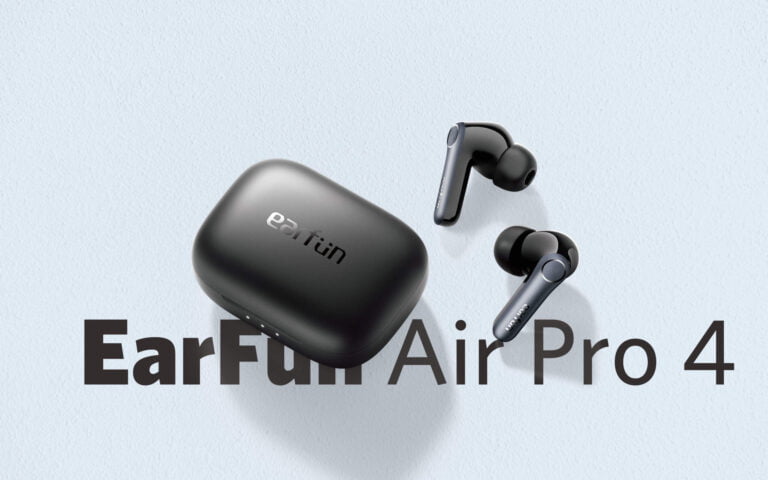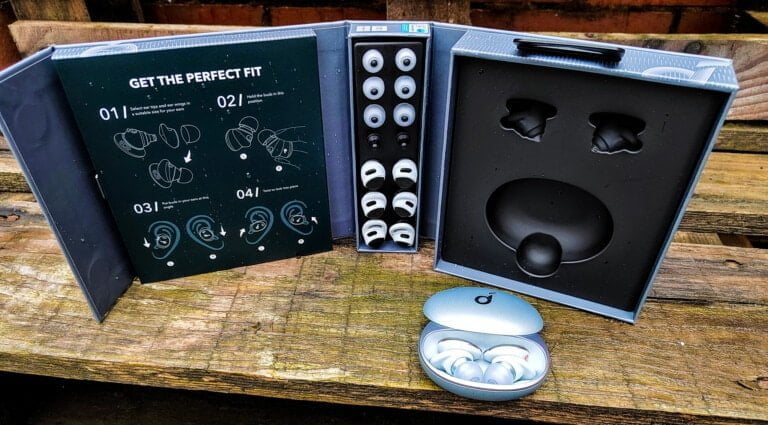Any links to online stores should be assumed to be affiliates. The company or PR agency provides all or most review samples. They have no control over my content, and I provide my honest opinion.
Wi-Fi 7 is still in development, and the final version is expected to be confirmed in early 2024. However, just like Wi-Fi 6, companies are already announcing products that should launch in 2023.
Both MediaTek and Qualcomm have confirmed Wi-Fi chipsets. The new flagship Qualcomm Snapdragon 8 Gen 2 and MediaTek Dimensity 9200 will support it, but it will be up to OEMs to implement it. I’d expect the Samsung Galaxy S23 to feature it.
MediaTek has also announced the Filogic 880 and 380, which are designed for routers and laptops. Intel has not yet launched a Wi-Fi 7 module, but they did demo the technology in September 2022.
TP-Link was the first consumer brand to announce Wi-Fi 7 products, and they didn’t do things by half. In November, they announced nine products that will have Wi-Fi 7. This includes three versions of the Deco mesh systems, including the flagship BE33000, which is a quad-band system. Then there were two access points, including the BE22000, which has dual 10G Ethernet ports. As for routers, there are four models announced, including the flagship Archer BE900 BE24000 quad-band I am covering today.
More recently, at CES 2023, ASUS threw its hat in the ring with the announcement of the tri-band RT-BE96U and the flagship quad-band GT-BE98, which is what I am comparing against the Archer BE900.
Wi-Fi 7 will finally make multi-gig Wi-Fi and wired LAN mainstream
Wi-Fi 7 looks like quite an exciting launch for the world of networking. While Wi-Fi 6 is good, a lot of the time, the performance hasn’t been massively greater than the older Wi-Fi 5. Now, with the new 6GHz band that was introduced with Wi-Fi 6E, it is quite easy to achieve greater than gigabit Wi-Fi speeds.
I have seen up to 1.5Gbps on 160Mhz 6GHz Wi-Fi 6E, but with Wi-Fi 7, you have access to 320MHz channel width, and you should be able to get around 3Gbps if the performance scales correctly.
Wi-Fi 7 also supports Multi-Link Operation (MLO), which would allow a device to operate on multiple frequencies at the same time for improved throughput. If my numbers are correct, that could mean around 4.5Gbps spread across 5GHz and 6Ghz! In theory, you’d also get increased range, thanks to MLO on the 2.4GHz frequency.
This has also forced OEMs to finally adopt proper multi-gig Ethernet. Most brands seem to have half-assed it with the current generation, implementing limited multi-gig ports, sometimes just a single 10Gbps WAN/LAN port.
With all these new routers that have been launched, we are typically seeing at least two 10GbE ports or at least multiple 2.5GbE ports on the lower spec models. This finally means that you can have multi-gig Internet (I wish) and integrate the router into a proper 10Gbps LAN.
Asus GT-BE98 vs TP-Link Archer BE900 Quad-band Wi-Fi 7 Routers Compared

The Asus GT-BE98 and the TP-Link Archer BE900 are the two flagship devices from both brands, and they both sound amazing.
As you’d expect, these tick pretty much all the boxes you’d want from premium Wi-Fi 7 routers, and they will likely be on my shortlist to buy when they get launched.
They both have four bands, so on the client side, you have 2.4GHz, 5GHz and 6GHz, but then you have a spare 5GHz band which will allow you to integrate these routers into a mesh system. ASUS have AiMesh, and TP-Link have EasyMesh.
Both routers support 160MHz on 5GHz or 320 MHz for Wi-Fi 7 on 6GHz, so your Wi-Fi 6 and Wi-Fi 7 devices should all be able to hit over gigabit speeds.
The Wi-Fi specification seems to be identical for both routers, but the TP-Link Archer BE900 has 12 antennas, whereas the ASUS has 8. The TP-Link is a big box with integrated antennas, whereas the ASUS uses external antennas. We will have to wait for the products to launch before we can see if that makes much difference in performance.
The WAN/LAN configuration is where we start to see a real difference, and both are superb.
For the ASUS, you have one 10Gbps WAN/LAN combo port, then 2x10GbE LAN ports and 4xgigabit. This is a good configuration if you have your PC and NAS on 10GbE, as you wouldn’t need a 10GbE switch.
The TP-Link has a more interesting design. It also has a single 10Gbps WAN/LAN combo port, but it then has an additional 10 Gbps SFP+/RJ45 combo WAN/LAN. For me, I have quite a few switches with 10 Gbps SFP+ and SFP+ has traditionally been the most affordable way to implement 10GbE for your LAN. It then has 4×2.5GbE LAN ports, and 2.5GbE switches are very affordable nowadays, finally, it also has a single gigabit port.
Asus GT-BE98 vs TP-Link Archer BE900 Price & Availability
Wi-Fi 6 saw a big increase in the price of networking hardware, and Wi-Fi 6E took things to the next level. The quad-band Netgear RBKE963 launched at £1500, and it has actually gone up in price since launch!
Therefore, it will come as no surprise that these two routers will cost a lot of money.
I am not sure if the Asus GT-BE98 has an official RRP, but I have seen 799 EUR quoted. Others have speculated $800, and it seems reasonable to assume it will be around that.
The TP-Link Archer BE900 has an official RRP of $699.99.
There is no word on UK pricing.
TP-Link has stated that the Archer BE900 should be available to pre-order around now (they originally quoted 31st December). The full TP-Link line-up is due by Q1/Q2.
As for ASUS, the two routers they have announced are still in the development stage, so it is unlikely you will see anything until later in the year.
With no phones or laptops supporting Wi-Fi 7 yet, there is no rush to roll out Wi-Fi 7 in your home.
Asus GT-BE98 vs TP-Link Archer BE900 Quad-band Wi-Fi 7 Routers Specification
| Wi-Fi 7 Router | ROG Rapture GT-BE98 | TP-Link Archer BE900 |
|---|---|---|
| Antennas | 8 | 12 |
| Wi-Fi Standard | Wi-Fi 7 | Wi-Fi 7 |
| Wi-Fi Bands | 2.4 GHz: up to 1376 Mbps (4096 QAM) 5 GHz: up to 5762 Mbps (4096 QAM + 160 MHz) 5 GHz: up to 5762 Mbps (4096 QAM + 160 MHz) 6 GHz: up to 11,525 Mbps (4096 QAM + 320 MHz) | 2.4 GHz: 1376 Mbps (4×4) 5 GHz-1: 5760 Mbps (4×4 4096 QAM + 160 MHz) 5 GHz-2: 5760 Mbps (4×4 4096 QAM + 160 MHz) 6 GHz: 11520 Mbps (4×4 4096 QAM + 320 MHz) |
| CPU | 2.6GHz quad-core | Not stated |
| Memory | 256 MB Flash, 2 GB DDR4 RAM | Not stated |
| WAN/LAN Ports | 1 x 10 Gbps WAN/LAN 2 x 10 Gbps LAN 4 x RJ45 10/100/1000 Mbps LAN | 1× 10 Gbps WAN/LAN 1× 10 Gbps SFP+/RJ45 Combo WAN/LAN 4× 2.5 Gbps LAN 1× 1 Gbps LAN |
| USB Ports | 1 x USB 3.0 1 x USB 2.0 | 1 x USB 3.0 1 x USB 2.0 |
| Mesh | AiMesh | EasyMesh |
| Price | 799 EUR / $799.99 ?? | $699.99 |
I am James, a UK-based tech enthusiast and the Editor and Owner of Mighty Gadget, which I’ve proudly run since 2007. Passionate about all things technology, my expertise spans from computers and networking to mobile, wearables, and smart home devices.
As a fitness fanatic who loves running and cycling, I also have a keen interest in fitness-related technology, and I take every opportunity to cover this niche on my blog. My diverse interests allow me to bring a unique perspective to tech blogging, merging lifestyle, fitness, and the latest tech trends.
In my academic pursuits, I earned a BSc in Information Systems Design from UCLAN, before advancing my learning with a Master’s Degree in Computing. This advanced study also included Cisco CCNA accreditation, further demonstrating my commitment to understanding and staying ahead of the technology curve.
I’m proud to share that Vuelio has consistently ranked Mighty Gadget as one of the top technology blogs in the UK. With my dedication to technology and drive to share my insights, I aim to continue providing my readers with engaging and informative content.







